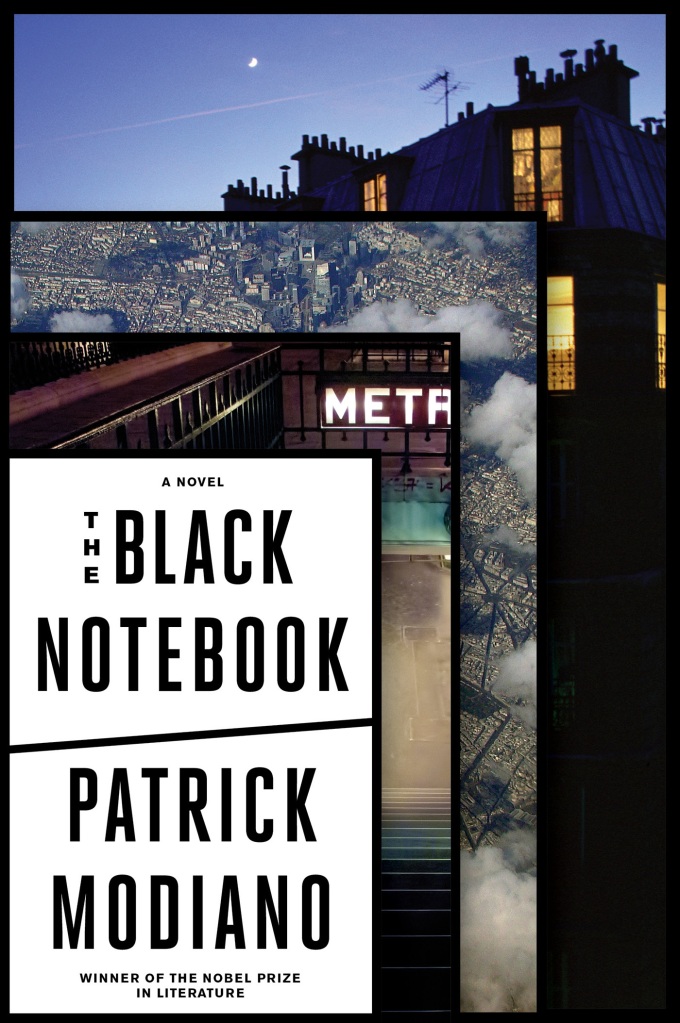
This is the third in the series of reviews of books of those authors who received the Nobel Prize in Literature. Patrick Modiano won the 2014 prize.
I have read the following (originally published in French before having received the Nobel prize):
After the circus (originally published in 1992; translation by Mark Polizzotti Yale UP, 2015),
Little Jewel (originally published in 2001, translated by Penny Hueston, Yale UP, 2015),
In the café of lost youth (originally published in 2007, translated by Chris Clarke, The New York Review of Books, 2016),
The Black Notebook (originally published in 2012, translated by Mark Polizzotti, Houghton Mifflin Harcourt, 2016).
Let’s start with general impressions. While I was reading (and this is true for all the books), I was on the edge of my seat to find out and figure out what happens to the characters whose lives contain mysteries to be discovered. Furthermore, the prose is flowing, clear, fast, the narrative is deceivingly simple, and the books themselves are pretty short: I got through After the Circus in one day. Interestingly, having finished reading, the characters and actions remain in a sort of haze, as if a slight mist enveloped them. If this was Modiano’s purpose, then he succeeded elegantly and marvelously.
Now the specifics. All the books have common elements, and here are only some which strike me as essential:
- Intradiegetic (first person) narrative
All four books are written from the first person point of view. This person is a protagonist of sorts since he (male in the majority of cases) narrates what he is looking for, which displaces the protagonist role on to the person/event/place he is searching for. The search is done from the perspective of an older person, about 30 years after the facts happened to a youthful self. The narrator often complains about his inability to remember certain crucial details of the past post factum (i.e. when he knows what exactly occurred), as well as being sorry not to have noticed these details while life was going on. As the narrator says in After the Circus, “When you are young, you neglect certain details.” (p. 53) These four books, therefore, point to the fact that as much as we would like to, we really cannot grasp the full characteristics of events and persons, and, above all, of our own self while life is going on. We can only form a fleeting image (hence the fog?) which is forever engraved in a gesture, in a smell, and, above all, for Modiano, in a place. The main thrust of the novels is to attempt “to gather up the scattered pieces of a life” (After the Circus, p. 75).
- The role of topography
These four novels are also tours of Paris, its subway system, its bars and restaurants, its characteristics of right and left bank as well as of arrondissements, its hotels, parks, roads, avenues and dead ends. Not having visited Paris, the meaning of these topographic details is impenetrable to me. And yet, they have significance for they shed light on the characters’ movements, and the position of their living quarters with respect to those of the protagonist. In After the Circus, the narrator explains additional effects: “…topographical details have a strange effect on me: instead of clarifying and sharpening images from the past, they give me a harrowing sensation of emptiness and severed relationships.” (p. 44) . More often than not, the topographic details are either obscured by time or completely disappear on account of demolition, new construction, abandonment. This perhaps ties to the “eternal return” in 4. below.
- Reference point
The above point may have one obvious reason for being so frequent in the books: the narrator is often looking for a “reference point” which most of the time is topographical. This point would help him disentangle the mysteries he encounters in the lives of those characters who he associates with.
- Eternal return
Not only retracing his steps topographically, the narrator tries to return to people and circumstances which he lived through when young.
- Things are not as they are given, especially names
Generally, characters in the four books either do not have names or have given themselves various names or are called by nicknames given them by others.
- Relationship ties unclear
In most cases, the relationship between the narrator-protagonist and his female friend is not stated in an obvious fashion: they sleep, eat, walk, go to see movies together, but there is no attempt to describe the feelings and desires which characters may have for each other. When the female character dies or disappears, there is no drama or trauma expressed by anyone.
In conclusion, the narrators of these four novels give an impression of someone who forever endeavours to understand the relationship that exists between narrating his own life and narrating other people’s lives. Is there a connection between, on the one hand, the manner in which one narrates and, on the other, how one views one’s life? It seems that Modiano vacillates between what Strawson calls Diachronic and Episodic narration and he cannot, for the lack of details, settle on one or the other (see Gallen Strawson, “Against Narration” in
Ratio (new series) XVII 4 December 2004, pp. 428-451 https://filedn.eu/lSmbVOH8OJnh8q06rNwVmqS/public.library/2020-11/against_narrativity.pdf).
This, perhaps, is the greatest strength of Patrick Modiano’s novels.
